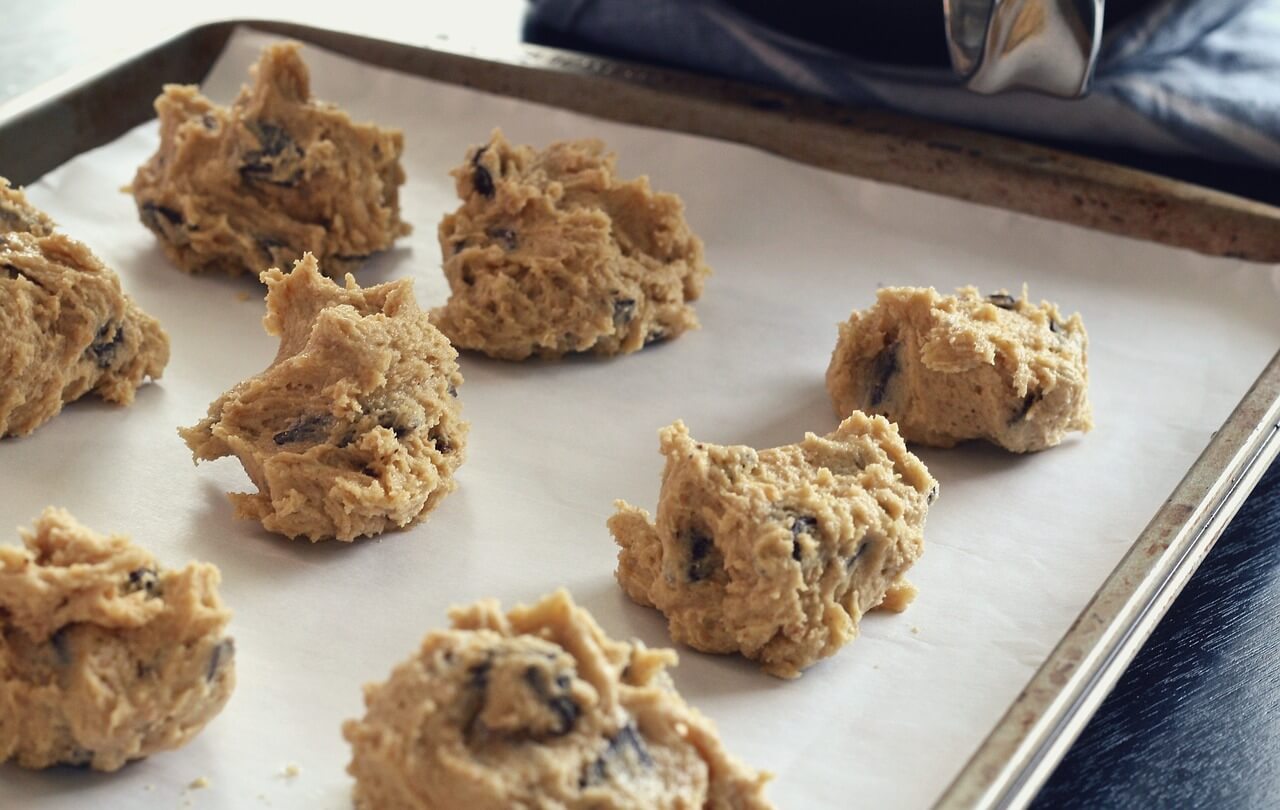Parchment paper, especially if you are a keen baker, is an absolute must in your store cupboard. But, it can be pricey to keep buying it over and over! Have you ever looked into how to make parchment paper at home for baking?
Well, it turns out that this is trickier than you might think… But, don’t despair! There are many other things you can try if you are looking at making your own parchment paper.
How Do You Make Homemade Parchment Paper?

“Parchment” is simply an old fashioned word for paper. If you google how to make parchment paper then you will just be told how to discolour a piece of paper!
Parchment paper for baking, however, is an entirely different beast.
- Also known as baking paper, parchment paper is great for baking, as it can withstand temperatures of up to 450F (230C) without setting on fire.
- Using parchment paper for baking is a great option, as it can be used to protect whatever you’re baking, without sticking all over the product. (This is because this paper is treated with a heat resistant, non stick layer – these days this is usually a type of silicone.)
- This type of baking paper is treated on both sides, so you don’t have to ensure that you are putting it “right side up” as you do with some other types.
- Parchment paper is also a great option for storing food, as you can wrap things in it to keep the air out, without worrying that anything is going to leach into your food.
- Making your own parchment paper would be pretty tricky, unless you have a source of silicone to hand!
You can make your own version of parchment or baking paper at home without silicone however, and it will do a similar job:
- Take a few sheets of pain paper, as much as you need for your baking task.
- Using a pastry brush or even an old paintbrush, spread melted butter or cooking oil over one side.
- Turn the paper over and repeat the process on the other side.
- Leave it to sit for two minutes, then take a piece of kitchen paper and wipe it all over the oiled paper to remove any excess oil.
- The paper is now ready to be used for your favourite baking project!
Here is a useful little video which takes you through all the steps for how to make your own parchment paper:
Can I Use Normal Paper For Baking?
The short answer to this question is no, no you can’t! Normal paper will not work in baking, for many reasons:
- When you are baking, you are heating up the food and its surroundings to blisteringly hot temperatures.
- Normal paper will heat up to the point that it will literally catch on fire – this is not what you want for your delicate cupcakes!
- Using normal paper to line your cake tins, or fashioning a flan dish mould with paper, may seem like a great money saving tip… But, take it from us. Just don’t do it!
- Anything that is not highly heat proof and resistant to being put in the oven, should never be put in the oven.
- Paper is very flammable, and very easy to set on fire. Please don’t put paper in the oven.
- At best you will be left with a sticky mess that tastes more like paper than anything else. At worst, you will be putting out fires all over your kitchen.
- Regular paper will need to be treated before it is able to go in your oven safely. The best thing to do is to buy or make something that can go in your oven without setting fire to your kitchen!
- You can turn normal paper into baking paper by brushing it with oil, but don’t use it as it is.
- If you don’t have baking paper, you can simply grease your tins and dishes to prevent sticking.
Can I Use Oil Instead Of Parchment Paper?
The old fashioned way of preventing food from sticking during the baking process was to use cooking fat, such as oil or butter.
You would rub a little butter or oil over your baking tray or pan, just enough to cover the surface and not leave it dripping with fat.
If you are out of parchment paper and you need to do some baking, simply break out the oil bottle!
- Spread a thin drizzle of oil over the bottom and sides of whatever baking tray or pan you are planning to use.
- Wipe the excess away with a tissue, so you are left with just a thin film of oil to prevent food from sticking.
- Take care when removing the food from the oven, as the oil can get super hot and it is easy to burn your fingers.
- Removing it from the pan may be slightly trickier as there is no edge of paper to simply lift away, so make sure you use a spatula to avoid burning yourself.
You can also use butter to grease your dishes and trays to prevent sticking; just wipe a small knob of butter around the surface you are going to cook on.
To make this an even better method, sprinkle a little flour over the butter once the pan is completely greased.
This will ensure that the food simply lifts away from the surface once it is cooked – there will be slightly more washing up, but surely it’s worth it!
Parchment paper is a very useful thing to have in your kitchen, especially if you are a fan of baking.
Final Words
As you can see, you can quite easily make your own baking paper at home, as long as you have butter or oil to hand. And, at least now you have an idea for some alternatives!